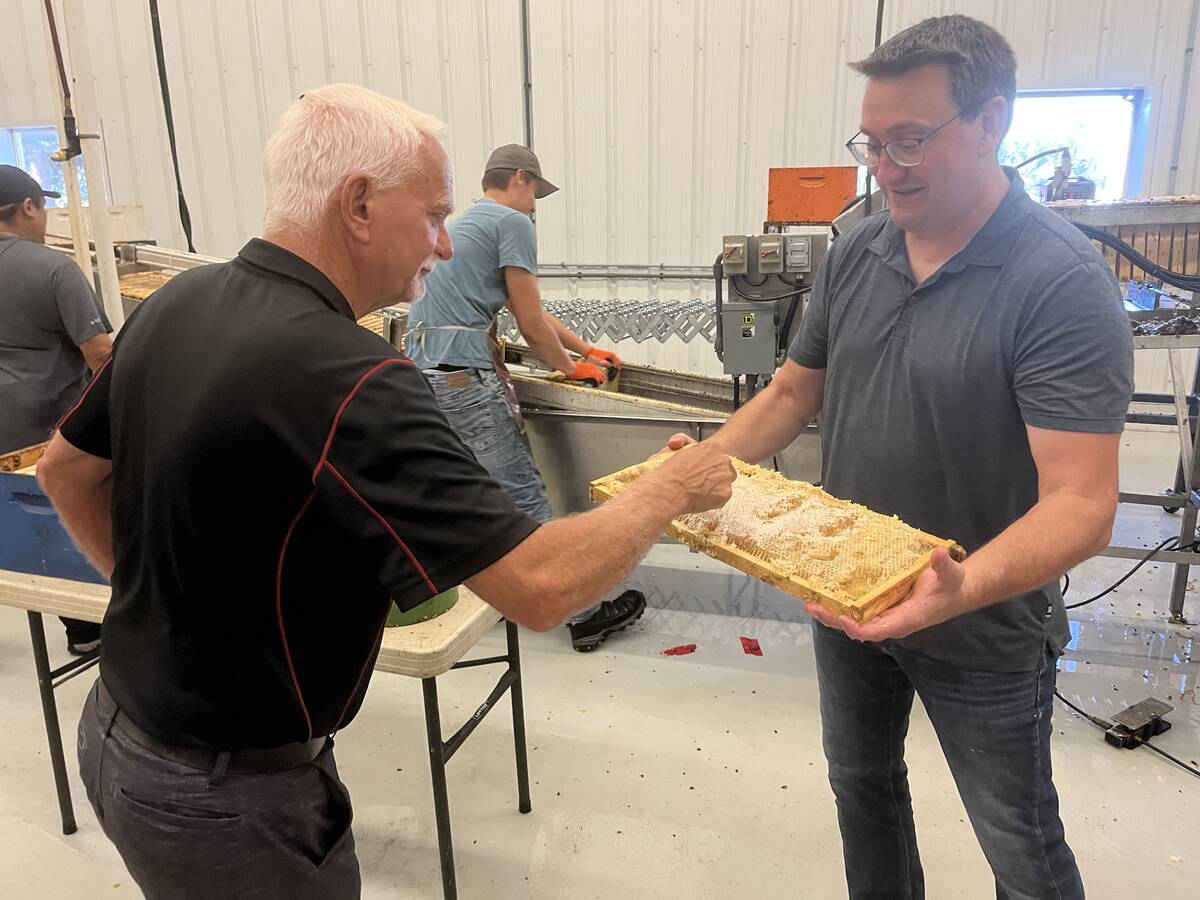Ron Wheeler says his clothing saved his life.
On April 15, 2002, he became wrapped around an auger on his farm near Briercrest, Sask.
His shirt and pants stretched and ripped and his cowboy belt buckle opened, eventually allowing him to be tossed naked from the machine.
If he had been wearing coveralls or a belt that stayed cinched, he figures he would have kept going around. Each corkscrew would have tightened his clothes in a stranglehold, threatening to rip off his limbs and choke off his breath.
Read Also

Alberta honey business ‘thrives’ despite bumpy beginnings
Thrive Honey showcases its honey production in market where Alberta produces 40 per cent of all honey produced in the country
So one of the first changes the Wheelers made after the accident was to wear a different style of clothing when doing chores.
His wife, Lorrie, said they also have posted a list beside their telephones that includes directions to the farm and phone numbers of local first responders.
Lorrie credits her husband’s positive attitude with keeping him alive during and after the accident. In 15 seconds the auger took him around three times, ripping into his body, demolishing ribs, breaking his leg, tearing a lung and bashing his head. Ron said his heart was the only major organ untouched in the accident.
A quick rescue by his 17-year-old son and a 13 minute drive to Moose Jaw got him to medical help before shock set in. Nine days after his accident, he was out of hospital.
Lorrie said they asked endless questions during Ron’s recovery about how and why the accident happened.
“It was a frightful time in our life. I still worry but I’ve learned to take the fear out of it.”
The Wheelers told their story at the Nov. 16 annual meeting of the Saskatchewan Farmers with Disabilities. They weren’t the only farmers who have suggestions for others to avoid accidents.
Bruce Osiowy, a Saskatchewan farmer who works alone, spent 66 hours with his hand caught in equipment in June 2003. He eventually cut off two fingers to free himself, but lost the hand.
He was at the conference urging farmers to buy a locator device. Within two minutes of an individual’s distress signal the global positioning systems pinpoint a location.
While everyone who hears of the $1,900 device agrees it’s a good idea, few are buying it. Osiowy said he thought he would be a spokesperson for the LifeSaver GPS for only six months but he is still at it.
“I farm 1,750 acres and I have a vending machine business. I don’t need a third job,” he said.
“(However,) I feel so responsible because if someone had reached me within 12 hours, I’d still have a hand.”
Neil Enns, head of the Manitoba Farmers with Disabilities, also has an idea of how to prevent accidents like the one that lost him his hand
He would like engineers to design a remote control for tractors and other equipment so that the engine will stop if the farmer gets caught and drops the control.
He said manufacturers thought they had a good idea by having the engine turn off whenever the driver left his seat, but Enns said farmers bypassed that safety feature by putting a heavy toolbox on the seat to keep the machine running.
Until recently, Sask Power was preventing accidental electrocutions through its buried line program. From 1998 to 2003, the utility spent $13.6 million to bury overhead power lines located in farmyards.
Because of budget constraints, however, the program won’t be offered in 2005, said Sask Power spokesperson Larry Christie. That decision will be reviewed at the end of 2005. Meanwhile, a more limited program offered on a cost-shared basis will bury overhead lines that are deemed a hazard in farmyards.
Sask Power representative Rob Nichols told the meeting that there are usually one or two deaths a year in the province resulting from farmers and their equipment touching power lines. He said if farmers contact a line they should stay in the tractor but not touch the doors, and warn others to stay away.
Electricity could energize the soil and electrocute anyone who tries to jump off the equipment or attempts a rescue.
















